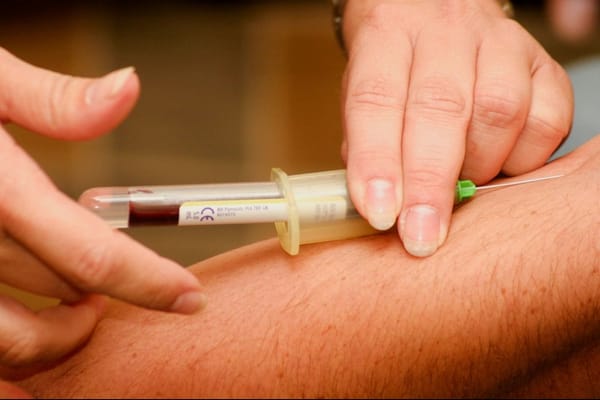In an era where sedentary lifestyles are increasingly common, a recent federal survey brings encouraging news about Americans' physical activity habits. According to the 2022 National Health Interview Survey, nearly 60% of adult Americans reported taking a walk for leisure or exercise in the past week[2]. This statistic not only highlights the popularity of walking as a form of physical activity but also underscores its potential impact on public health. Let's delve deeper into the findings of this survey and explore the implications for health and wellness in the United States.
Survey Findings: A Closer Look
The National Health Interview Survey, conducted by the National Center for Health Statistics (NCHS), provides a representative sampling of U.S. households. The 2022 data revealed that 58.7% of adults walked for leisure in the seven days preceding the survey[2]. This figure suggests that walking is a widely adopted form of physical activity among Americans.
Gender Differences
Interestingly, the survey uncovered a gender disparity in walking habits. Women were more likely to engage in leisure walks compared to men:
- 60.5% of women reported walking for leisure
- 56.9% of men reported walking for leisure[2]
This difference, while not dramatic, raises questions about the factors influencing walking habits among different genders.
Age-Related Trends
The survey also revealed a correlation between age and walking habits. Younger adults were more likely to walk for leisure compared to older generations:
- 61.8% of adults aged 18-44 walked for leisure
- 59.1% of adults aged 45-64 walked for leisure
- 51.6% of adults aged 65 and older walked for leisure[2]
This declining trend with age could be attributed to various factors, including health issues, mobility limitations, or lifestyle changes associated with aging.
Socioeconomic Factors
Income and education levels appeared to have a significant impact on walking habits:
- 67.2% of individuals in the highest income tier walked for leisure
- 46.9% of adults with family incomes below the federal poverty level walked for leisure[2]
Similar trends were observed with education levels, with more highly educated adults walking for pleasure and exercise more frequently than those with less education. These findings highlight the potential influence of socioeconomic factors on physical activity habits.
Racial and Ethnic Differences
The survey also revealed variations in walking habits across different racial and ethnic groups:
- 63.8% of Asian Americans walked for leisure
- 61.5% of White Americans walked for leisure
- 53.5% of Hispanic Americans walked for leisure
- 49.2% of Black Americans walked for leisure[2]
These disparities underscore the need for targeted public health initiatives to promote physical activity across all communities.
Walking for Transportation
While the primary focus of the survey was on leisure walking, it also touched upon walking for transportation purposes. The NCHS report found that 16.2% of adults reported walking for transportation[2]. Interestingly, unlike leisure walking, rates of transportation walking tended to increase as incomes decreased. This finding suggests that walking serves different purposes for different socioeconomic groups.
The Health Benefits of Walking
Walking is often touted as one of the simplest and most accessible forms of physical activity. The American Heart Association (AHA) emphasizes that walking is "free, easy and can be done just about anywhere, even in place."[2] Let's explore some of the key health benefits associated with regular walking:
Cardiovascular Health
Walking is an excellent cardiovascular exercise that can help strengthen the heart and improve circulation. Regular walking can:
- Lower the risk of heart disease and stroke
- Reduce high blood pressure
- Improve cholesterol levels
Weight Management
Walking is an effective tool for weight management. It burns calories, helps maintain muscle mass, and can boost metabolism. Consistent walking, combined with a balanced diet, can aid in weight loss and weight maintenance.
Mental Health
Physical activity, including walking, has been shown to have positive effects on mental health. Benefits include:
- Reduced stress and anxiety
- Improved mood
- Better sleep quality
- Enhanced cognitive function
Bone and Joint Health
Walking is a low-impact exercise that can benefit bone and joint health:
- Strengthens bones and reduces the risk of osteoporosis
- Improves joint flexibility and reduces joint pain
- Enhances balance and coordination, reducing the risk of falls
Diabetes Management
Regular walking can play a crucial role in diabetes management:
- Helps control blood sugar levels
- Improves insulin sensitivity
- Reduces the risk of developing type 2 diabetes
Incorporating Walking into Daily Life
The AHA emphasizes that "any amount of movement is better than none," and encourages breaking up walking into short bouts throughout the day[2]. Here are some strategies to incorporate more walking into daily routines:
- Take short walks during work breaks
- Use stairs instead of elevators
- Park farther away from destinations
- Walk short distances instead of driving
- Join a walking group or club
- Use a treadmill while watching TV or during conference calls
- Take a post-meal walk to aid digestion
- Walk a dog (yours or volunteer at a local shelter)
- Explore local parks or nature trails on weekends
- Use a step counter or fitness tracker for motivation
Overcoming Barriers to Walking
While walking is accessible to many, barriers can still exist. Addressing these challenges can help increase walking rates across all demographics:
Safety Concerns
Some neighborhoods may lack safe walking areas. Community initiatives to improve sidewalks, lighting, and overall neighborhood safety can encourage more people to walk.
Time Constraints
Many people cite lack of time as a reason for not exercising. Emphasizing the benefits of short, frequent walks and suggesting ways to incorporate walking into daily routines can help overcome this barrier.
Weather Conditions
Extreme weather can deter outdoor walking. Indoor alternatives like mall walking or treadmill use can provide options during inclement weather.
Physical Limitations
For individuals with mobility issues, adaptive equipment or physical therapy can help make walking more accessible.
Lack of Motivation
Setting goals, using fitness trackers, or walking with friends can help boost motivation.
Public Health Implications
The survey's findings have significant implications for public health initiatives:
- Targeted Interventions: Given the disparities in walking rates across different demographics, targeted interventions could help increase physical activity in underrepresented groups.
- Urban Planning: The data on walking for transportation highlights the importance of walkable communities. Urban planners can use this information to design more pedestrian-friendly environments.
- Health Education: Continued education about the benefits of walking and strategies to incorporate it into daily life can help increase overall physical activity levels.
- Workplace Initiatives: With many adults spending significant time at work, workplace walking programs could be an effective way to increase physical activity rates.
- Healthcare Integration: Healthcare providers can use this data to emphasize the importance of walking to patients and potentially "prescribe" walking as part of treatment plans.
Conclusion
The finding that 60% of U.S. adults walk for leisure or exercise is encouraging news for public health. Walking, with its numerous health benefits and accessibility, represents a powerful tool in the fight against sedentary lifestyles and associated health risks. However, the disparities revealed by the survey also highlight areas for improvement and targeted interventions.
As we move forward, it's crucial to continue promoting walking as a form of physical activity, addressing barriers, and working towards making walking accessible and appealing to all segments of the population. By doing so, we can hope to see even higher percentages of Americans embracing this simple yet effective form of exercise in the future.
Remember, as the American Heart Association notes, "The simplest way to get moving and improve your health is to start walking."[2] Whether it's a leisurely stroll in the park or a brisk walk around the block, every step counts towards better health.
Citations:
[1] https://www.medicinenet.com/six_in_10_us_adults_walk_for_leisure_exercise/news.htm













Member discussion